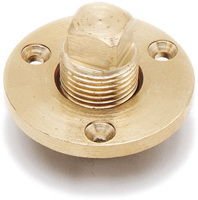BuoyOBuoy
Veteran Member
I've looked through the threads for this one, so if it should be obvious please point it out.
My Mainship has two golf cart batteries as the House Bank to which nothing else is turned on, but the bilge pump is connected. Although they are fully charged they are not plugged in to AC while the boat is on the hard for the winter.
I leave for Florida for six months and she is left to fend for herself.
Although she is covered with a tarp this year, can I put a small solar trickle charger ( the type used on dashes in car lots ) to ensure the batteries are kept topped up?
What say you?
My Mainship has two golf cart batteries as the House Bank to which nothing else is turned on, but the bilge pump is connected. Although they are fully charged they are not plugged in to AC while the boat is on the hard for the winter.
I leave for Florida for six months and she is left to fend for herself.
Although she is covered with a tarp this year, can I put a small solar trickle charger ( the type used on dashes in car lots ) to ensure the batteries are kept topped up?
What say you?


